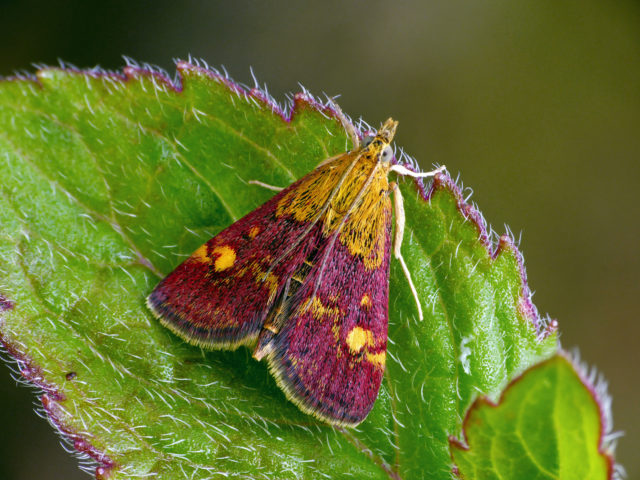Climate change and horticulture bring new moths to the UK
Experts are asking people to look out for pyralid moths to see how native species and new arrivals are faring, in an annual UK-wide event.

New moths are arriving and settling in the UK as a result of climate change and the horticultural trade, wildlife experts have said.
Almost 30 new species of pyralid moths have been recorded in the UK in the last 30 years, including eight which have become established residents, wildlife publisher Atropos and charity Butterfly Conservation said.
The pyralid group of moths includes some of the largest and most distinctive of 1,600 micro-moths, generally smaller species, found in the UK.

Pyralids are often under-recorded, experts said, so new records of sightings will help show how they are faring and to spot new species on the UK’s shores.
While the seas around the UK provide a natural barrier to many colonising species, the horticultural trade can provide a route into the country, with moth eggs, caterpillars and pupae hitching a ride on imported plants.

Climate change is altering conditions to enable moths to take advantage of habitats in new areas, the experts said.
Many recent pyralid settlers have arrived naturally, probably helped by climate change, including Evergestis limbata, which has settled along the south coast since it was first recorded in 1994.

Some pyralids are rare and threatened in the UK, including the white-spotted sable, which is in decline in its home of woodland glades and hillsides.
The scarce crimson and gold moth is thought to occur in sand dunes in Northern Ireland and survives on the Isle of Man, but has been lost from England and Scotland.
Easy-to-spot native pyralids include the day-flying mint moth, which can be found among garden herbs as well as open grassland, and the small magpie and the mother of pearl moths which can also be found in gardens.

Richard Fox, Butterfly Conservation’s associate director of recording, said: “This year for the first time Moth Night is focusing on a fascinating group of micro-moths.
“Moths are often portrayed as boring, brown and impossible to identify, but pyralids explode these myths with simply stunning species such as the scarce crimson and gold, and amazing life histories such as the beautiful China-mark, whose caterpillars live under water.”

Marc Botham, ecologist at the Centre for Ecology and Hydrology, said: “Pyralids are a captivating but relatively poorly known group of moths.
“The three days and nights of Moth Night 2018 are an ideal opportunity to search for them in your garden or further afield, including at organised events.
“By submitting your sightings via our website you are helping with research to understand the status of UK wildlife.”
Moth Night 2018 runs June 14-16. For more information visit www.mothnight.info





